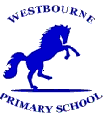
WESTBOURNE
A village history in West Sussex
Home | Personal | Church | Scouts | Schools | Ambrose | Sketchbook | Workhouse | Census | Memories | Yesteryear | Publications | Village Website
WESTBOURNE INFANT
The 1944 Education Act gave every child a free education to the age of 15. This was later raised to 16 in 1973. In school it could be very cold in winter as there was no central heating. Lavatories were built away from the classrooms. Windows would often be high to distract children from seeing what was going on outside. That did not stop me from being told off for daydreaming particularly at secondary school. Every day each child received a free, small, bottle of milk and a straw at the mid-
I arrived at the school when I was about 7 years old. The term started a meeting in school hall with lots of new children, probably mostly evacuees like me. No doubt nervous as what was about to happen to us, Miss Croombes soon put us at ease. Cannot remember much else about those early years. Later I was in Mr Urry's class with his son David. We sat at double desks with inkwells. In front were a couple of girls, one whose name may have been Ruth. She had pigtails: do I need to go on? My mother helped in the kitchen to prepare the lunches. No problem for her as she had been in service before marriage.
I do recall the separate boys and girls playgrounds separated by a high fence. The lads had the occasional 'bunk up' to see what the girls were up to. Boring....hopscotch, skipping and the like. A favourite game for us boys was storming the East gate. It was wooden at about 5 feet high and not too easy to climb. Two boys would straddle across the top and others would try to climb over. There were of course bruised knees from falling off, but no broken bones. However, the worst was yet to come as the gate was very close to the main road along that was passed by the bus from The Cricketers Pub. On one occasion, carried on by his excitement of crossing the gate, my brother ran into the road straight into the side of the bus. Fortunately he was more scared than hurt, but a reminder for all of us.
Between the school and the Club was the former rifle range. In future years it would become the Scout hut. Alongside this was the canal where some times a group of boys and girls would sit on the bank. We played a question game called Truth, Love, Hate or Dare. As infant children it cannot be believed that the questions were too provocative as they might be today with mass communication. For example, on one occasion we went to the duck ponds, up the road at Aldsworth. It was Spring time and the frogs were busy laying their frog spawn. We told our parents that we had seen them giving each other piggy backs. We recall that we were late back for school and had to report to Mr Simmonds, the Headmaster.
At the end of one winter term us 2 boys were taken by our mother to Morgan’s shop to buy waterproof coats for the beginning of next term. Naturally we were keen to wear them, but it didn't rain for weeks. If we waited much longer I would have outgrown mine and my brother would have had yet again another hand down. It was war time and the clothing coupons had to stretch just as far as the money did. Repair the worn-
All too soon I was in my final year and my parents were considering my future education. All children would attend some type of secondary school which was decided by an exam which was named the 11+. Somehow I found myself attending Chichester High School for Boys.
The logos of the Infant School rearing horse and the Neighbourhood Plan twin-
“….Having thus returned to The Square, it will be well to observe that both the Lamb and the White Horse are inns that have held these names and to have been on the same sites (in all likelihood) for many hundreds of years, though the original buildings seem to have entirely disappeared in both cases. The White Horse belonged to the Earl of Arundel, the lord of the Manor, and the Lamb belonged to the church. It was from these circumstances that they derived their names. The lamb is the symbol of St John the Baptist, the patron saint of the Parish Church, and therefore the Church inn was named after it. The Running White Horse was the crest or badge of the Earl of Arundel (it may still be seen carved on the beam that spans the entrance to the North Porch of the Church, a carving executed by order of an Earl of Arundel between 1544 and 1551, and probably between 1544 and 1548, and was therefore the natural name for an inn that belonged to the earldom. The old connection of the Running Horse with Westbourne was revived about 1875, when the School Board, formed in that year, adopted this device for their seal. This is the reason why the Running Horse appears as the vane on Southbourne Schools….”


Neighbourhood Plan